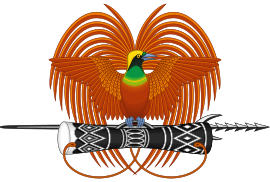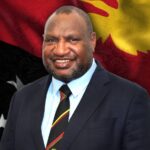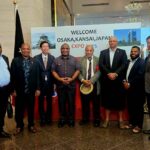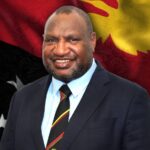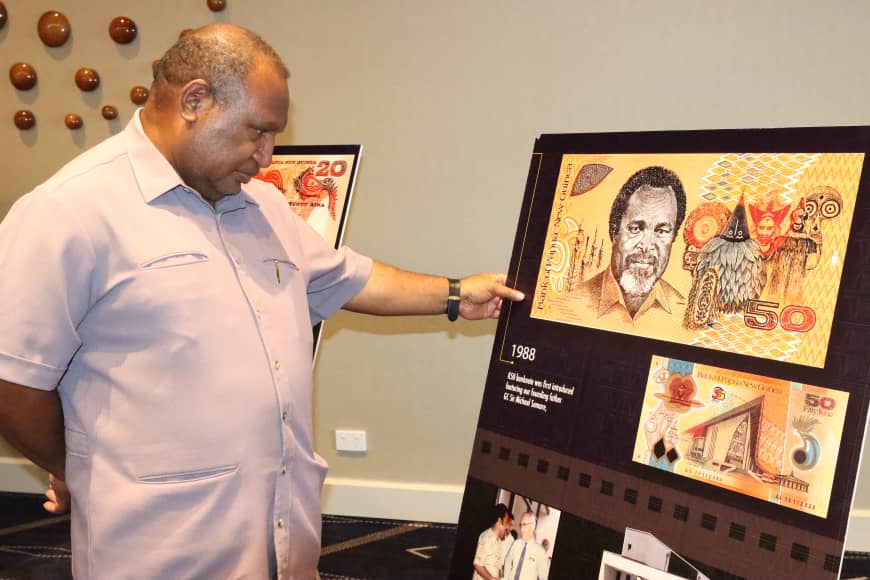Prime Minister Hon. James Marape today announced that Papua New Guinea will honour the late Sir Julius Chan, one of the nation’s founding leaders, with the issuance of a new K100 banknote bearing his image — a historic tribute to a man regarded as the chief architect of PNG’s financial system.
Speaking during a commemorative event in Port Moresby marking the 50th anniversary of the Kina and Toea, Prime Minister Marape paid special respect to Sir Julius Chan, who was recently laid to rest in his beloved Tanga Island in New Ireland Province.
“Sir Julius Chan was a towering figure in our country’s history. He built the financial foundations that still support our economy today,” said Prime Minister Marape. “On behalf of the nation, I take this time to pay him a special tribute. Cabinet has already approved the proposal to issue a K100 note bearing his image, to be launched before our Independence Day celebrations on September 16.”
Prime Minister Marape acknowledged Sir Julius’ children, Vanessa, Mark and Toea and thanked them for sharing their father with the nation. He noted that Sir Julius had earlier declined the idea of a currency bearing his image while he was alive, requesting that it be considered only after his passing.
A Deeper Reflection on Kina and Toea
The Prime Minister used the occasion to deliver a powerful reflection on the deeper meaning of Kina and Toea as not merely units of currency, but enduring symbols of Papua New Guinea’s cultural unity and history.
“Our ancestors were trading long before 1975 — before the modern nation of Papua New Guinea was born,” he said.
“Kina and Toea existed as currency across tribal nations, binding communities together through trade and commerce. These shells were carried hundreds of kilometres inland, exchanged across generations. It reminds us that we are a nation of traders and hardworking people, not idly waiting for handouts.”
Prime Minister Marape urged today’s young generation to look beyond the distractions of social media and negativity, and instead draw inspiration from the resilience and industry embedded in the spirit of Kina and Toea.
Building a Modern Economic Future
Prime Minister Marape also provided strong commentary on Papua New Guinea’s economic future as the country marks 50 years of Independence.
He noted that the Kina was initially pegged at par with the US dollar to provide stability in 1975 under Sir Julius Chan’s leadership. Later, it was allowed to float to reflect market forces — a necessary move to protect the nation’s economy during challenging periods, such as the 1994 financial adjustments.
“As we move forward, we must not view the Kina’s strength purely in terms of its pegged value but by the productivity of our people,” Prime Minister Marape stressed. “A strong nation must be a producing nation. Agriculture, trade, and commerce must once again drive our economy.”
He called on Papua New Guineans to take advantage of new trade opportunities, particularly with China and Southeast Asia, where markets for coffee, copra, and cocoa are expanding rapidly.
Prime Minister Marape reaffirmed his government’s commitment to supporting Central Bank Governor Elizabeth Genia in modernising the financial system while preserving its independence.
“We are targeting a K200 billion econom in the years ahead,” he said. “A modern, strong central bank and a productive economy will help Kina and Toea remain powerful symbols of our sovereignty and unity.”
Conclusion: A Legacy for the Future
In closing, Prime Minister Marape reminded the nation that Kina and Toea are more than money — they are powerful emblems of Papua New Guinea’s ancient traditions, its unity across diversity, and its future aspirations as a bridge between the Pacific and Southeast Asia.
“We must rise, produce, and honour the vision of our forefathers. Sir Julius Chan’s legacy will live on not only in our currency but in the spirit of a proud, independent, and hardworking Papua New Guinea,” said the Prime Minister.
